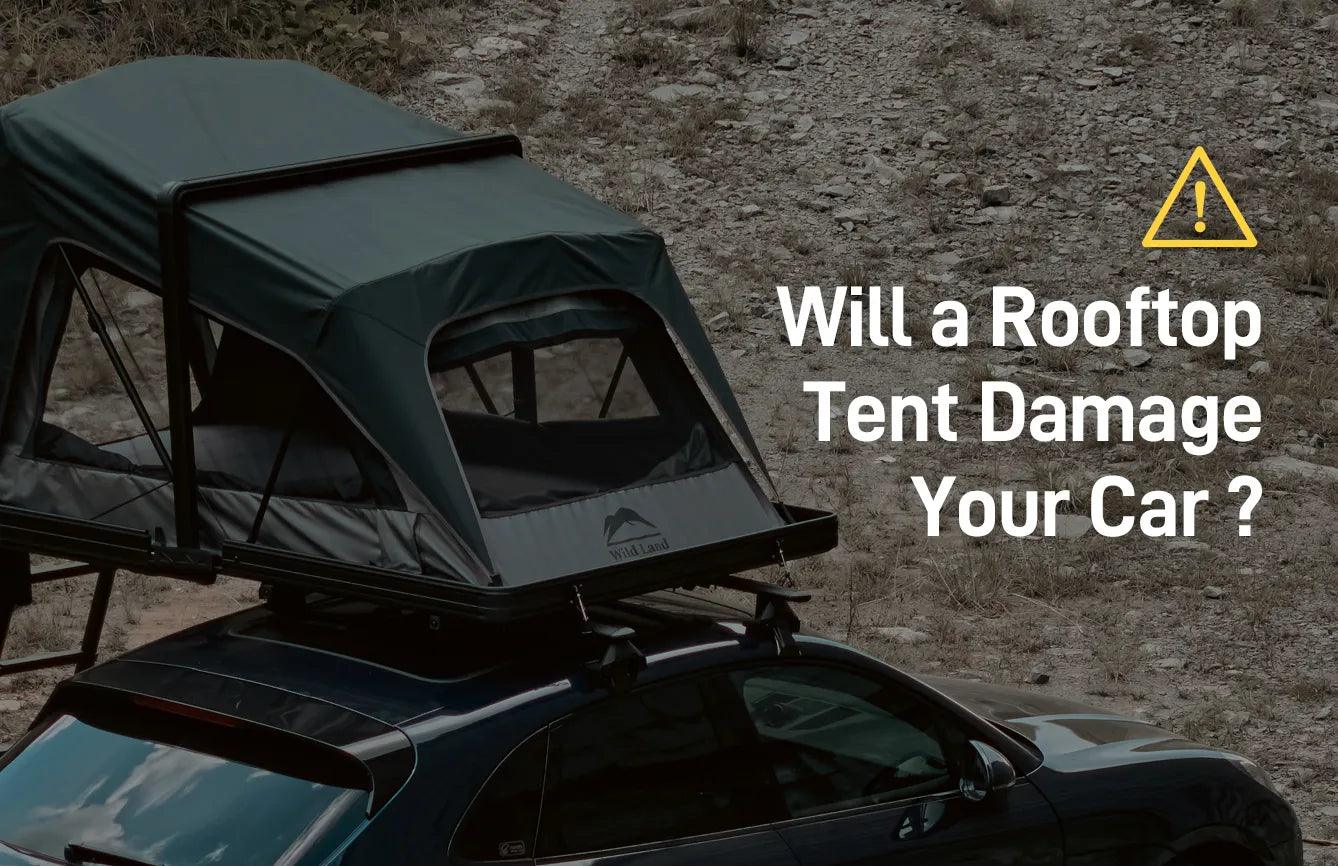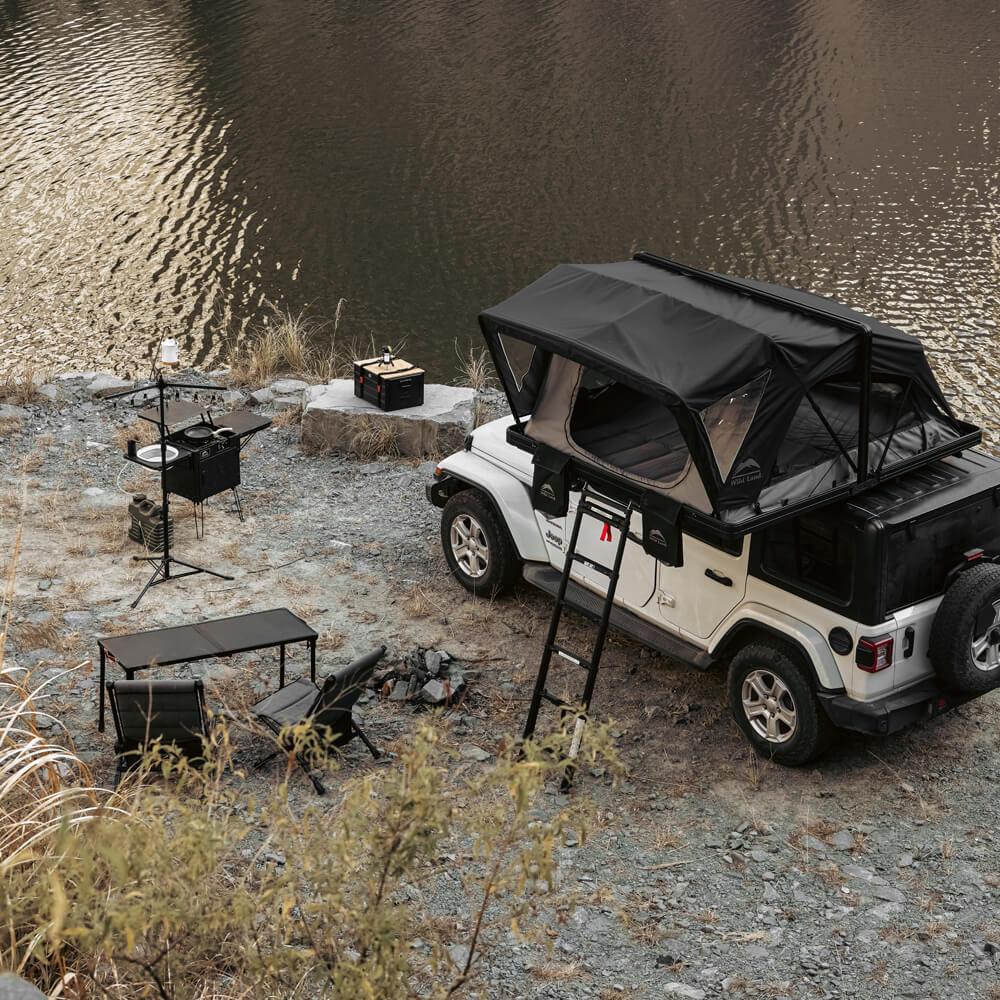Roof top tents have become the “mobile bedroom” of overlanding and have gained popularity among camping enthusiasts in recent years. However, many vehicle owners worry about whether installing one might cause structural damage to their cars. This article will analyze, from the perspectives of technical principles, safety hazards, and regulatory restrictions, the potential impacts a roof top tent may have on your vehicle, and offer scientifically based protection advice.
1. Potential Risks of Roof Top Tents to Your Vehicle
1.1 Overloading: The Hidden “Killer”
Weight Issues
Roof top tents typically weigh between 40 to 70 kilograms. When you add the weight of luggage and occupants during camping, the overall load can easily exceed the vehicle’s designed weight limit.
- Static Load Capacity: For example, a small car’s roof might be rated to carry about three times the vehicle's own weight (consult the manufacturer for specific numbers), while SUVs generally have higher limits.
- Dynamic Load Capacity: At speeds around 60 km/h, the effective load capacity of the roof is roughly one-third of its static capacity. Even if you only account for the tent’s weight, it may approach or even exceed the load limit of the roof rack—many factory-installed roof racks are only rated for around 75 kilograms.
Roof Rack Load Limitations
Many vehicles come with roof racks that have a dynamic load capacity of around 75 kilograms. This means that after installing a roof top tent, adding extra luggage or even passengers can easily surpass the safe load capacity of the rack. Therefore, it is essential to check your vehicle's user manual for the specific load limits of both the roof and the rack, and consult professional advice to ensure safe installation.
1.2 Risks Associated with Improper Installation
Insecure Fixation
If the tent is not securely installed, frequent assembly and disassembly may cause paint damage or loosen the fixing bolts, leading to abnormal noises during driving and potentially compromising safety.
Inadequate Fit
When the tent’s dimensions exceed the vehicle’s width, it can increase wind resistance, adversely affect vehicle handling, and even lead to accidents.
Oxidation and Corrosion
Roof racks, especially those made of aluminum alloy, are prone to oxidation or corrosion when exposed to rain or car cleaning agents over time. Regular inspection and maintenance are therefore necessary.
2. How to Protect Your Vehicle from Damage
2.1 Choosing the Right Product
Vehicle-Specific Compatibility
It is recommended to select a tent product specifically designed for your vehicle type. For example, the Summit Explorer series is suited for 4x4s and SUVs, while the Summit Explorer Max is more appropriate for pickup trucks or larger vehicles.
Material and Design
- Hard Shell Tents: Made from materials like ABS or carbon fiber, these tend to be more durable and have lower wind resistance.
- Soft Shell Tents: These are lighter and typically less expensive. Your choice should balance your specific needs and budget.
2.2 Proper Installation and Regular Maintenance
Roof Rack Selection
Use a roof rack with a dynamic load capacity of at least 75 kilograms, and ensure the spacing between the crossbars does not exceed 1.3 meters to distribute the load evenly.
Standard Installation Procedure
Follow a step-by-step process: “center positioning → bolt fixation → sealing reinforcement” to prevent uneven load distribution that might damage your vehicle.
Regular Inspections
It is advisable to check the tightness of the bolts monthly and clean the contact areas between the roof and the tent to prevent rust and other potential issues.
3. Summary and Action Guidelines
A roof top tent does not directly damage your vehicle. However, the associated risks depend on product selection, the installation process, and routine maintenance. To ensure both your vehicle’s safety and the proper functioning of your tent, it is recommended to:
- Consult your vehicle’s user manual to understand the roof load limits.
- Choose brands with proven safety records (such as Wild Land) that have passed collision tests.
- Conduct a load stability test after installation, especially before your first long-distance journey.
By selecting the right product and adhering to proper installation practices, you can enjoy a safer and more pleasant travel experience. May your roof top tent be the wings that help you explore nature, not a burden.





Leave a comment
All comments are moderated before being published.
This site is protected by hCaptcha and the hCaptcha Privacy Policy and Terms of Service apply.